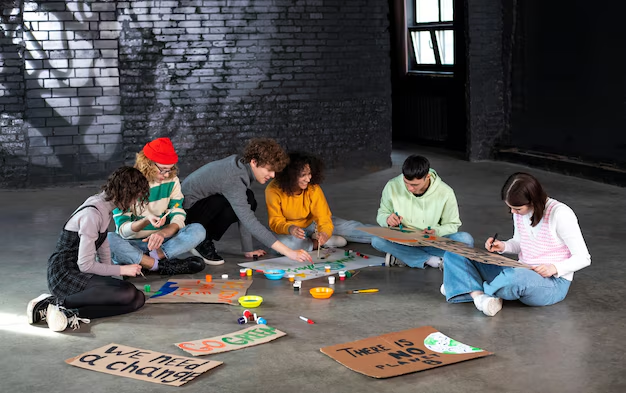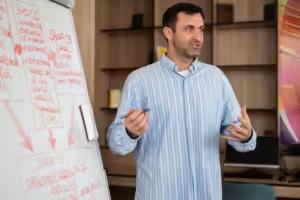How to Spot a Fake Human Gathering
Introduction to Fake Human Gatherings
In a world where connections are just a click away, it’s easy to be swept up in the whirlwind of social gatherings. But not all human interactions are created equal. Have you ever walked into a room and sensed something was off? Perhaps the laughter felt rehearsed or the conversations lacked depth. These sensations might lead you to wonder: is this human gathering fake?
Fake human gatherings can take many forms—from superficial meetups that focus more on appearances than authenticity, to online events that tout community but feel hollow inside. As we navigate our increasingly digital lives, distinguishing between genuine interactions and those crafted for show has never been more crucial.
Let’s explore what defines these inauthentic encounters and how to spot them before investing your time and energy—because authentic connections are worth their weight in gold!
Signs of a Fake Human Gathering
Fake human gatherings often have telltale signs that can be spotted if you know what to look for. One clear indicator is the lack of genuine interaction. People may appear physically present but are glued to their phones, engaging more with screens than each other.
Another sign is an overly curated atmosphere. If everything feels artificial—from decorations to staged conversations—it’s likely designed for show rather than real connection.
Watch out for forced laughter and awkward silences. When interactions feel rehearsed or uncomfortable, it raises questions about the authenticity of the gathering.
Consider the guest list. If attendees seem like strangers who don’t share common ties or interests, it might signal a superficial event meant to impress rather than foster real relationships.
How Social Media Contributes to Fake Human Gatherings
Social media plays a significant role in shaping perceptions of human gatherings. It can create an illusion of connection, making events appear more vibrant than they truly are. This curated reality often attracts individuals seeking to be part of something meaningful.
Platforms like Instagram or Facebook showcase picture-perfect moments that may not reflect the true atmosphere. A gathering could look lively online, but it might lack authenticity when experienced in person.
Moreover, social media algorithms prioritize content that garners attention over genuine connections. This leads to superficial interactions and promotes gatherings centered around likes rather than authentic relationships.
FOMO—fear of missing out—is intensified by constant updates from friends or influencers attending these seemingly exciting events. This pressure can compel people to participate in fake human gatherings simply for the sake of appearances.
While social media connects us, it often distorts our understanding of what real connections should feel like.
Strategies for Identifying and Avoiding Fake Human Gatherings
To identify and avoid fake human gatherings, start by observing the attendee behaviors. Are they genuinely engaged or just going through the motions? Look for signs of authentic interaction, such as laughter or spontaneous conversations.
Next, check the event’s promotion channels. If it’s heavily curated on social media with little organic sharing, that could indicate a lack of authenticity. Genuine events often attract a diverse crowd instead of a select few influencers.
Additionally, ask questions before attending. Speak to people who have been there in previous years. Their insights can reveal much about whether an event is truly worth your time.
Be cautious about venues too. If places frequently tout themselves as trendy yet feel sterile or staged, it might be best to steer clear. The atmosphere should foster real connections rather than scripted interactions designed for showmanship.
The Impact of Fake Human Gatherings on Mental Health
Fake human gatherings can take a toll on mental health in subtle yet significant ways. When individuals engage in these superficial interactions, they often leave feeling more isolated than before. The façade of connection wears thin quickly.
These gatherings may foster feelings of inadequacy. People compare themselves to others who seem effortlessly happy or engaged, leading to low self-esteem and anxiety. Authenticity is key for emotional well-being, and the absence of genuine connections can create an underlying sense of loneliness.
Moreover, disengagement from real relationships may result in chronic stress. Individuals might find it difficult to open up or seek support when needed. This reinforces a cycle where fake interactions replace meaningful conversations that truly nourish the soul.
Navigating through a landscape filled with insincerity challenges our ability to form lasting bonds—an essential aspect of good mental health we must prioritize and nurture.
Real vs. Authentic: The Importance of Genuine Connections
In a world flooded with curated images and highlight reels, the concept of authenticity feels more important than ever. Genuine connections go beyond surface-level interactions. They involve vulnerability, understanding, and mutual respect.
When we engage authentically, we foster deeper relationships that enrich our lives. These bonds provide emotional support during challenging times and celebrate joys together without judgment.
Real connections are messy; they come with disagreements and differing opinions. However, it’s through these challenges that true growth occurs. We learn from each other’s perspectives.
Engaging in superficial gatherings may offer temporary satisfaction but can leave us feeling isolated in the long run. Authentic relationships cultivate trust and love—elements essential for mental well-being.
Investing time in meaningful conversations reaps lasting rewards that far outweigh transient social media likes or fleeting encounters at events lacking substance.
Conclusion
Understanding the nuances of human interactions is crucial in today’s social landscape. As our lives become increasingly intertwined with technology, the lines between real and fake gatherings can blur. Being aware of the signs of a fake human gathering empowers you to make informed choices about where to invest your time and emotional energy.
Engaging in genuine connections enriches our lives and supports mental well-being. By fostering authentic relationships, we not only enhance our own experiences but also contribute positively to those around us. It’s important to take a step back from the digital noise and seek out meaningful interactions that truly resonate with who we are.
By staying vigilant and discerning, you can navigate the complex world of social gatherings—ensuring that your connections are both fulfilling and real.














Post Comment